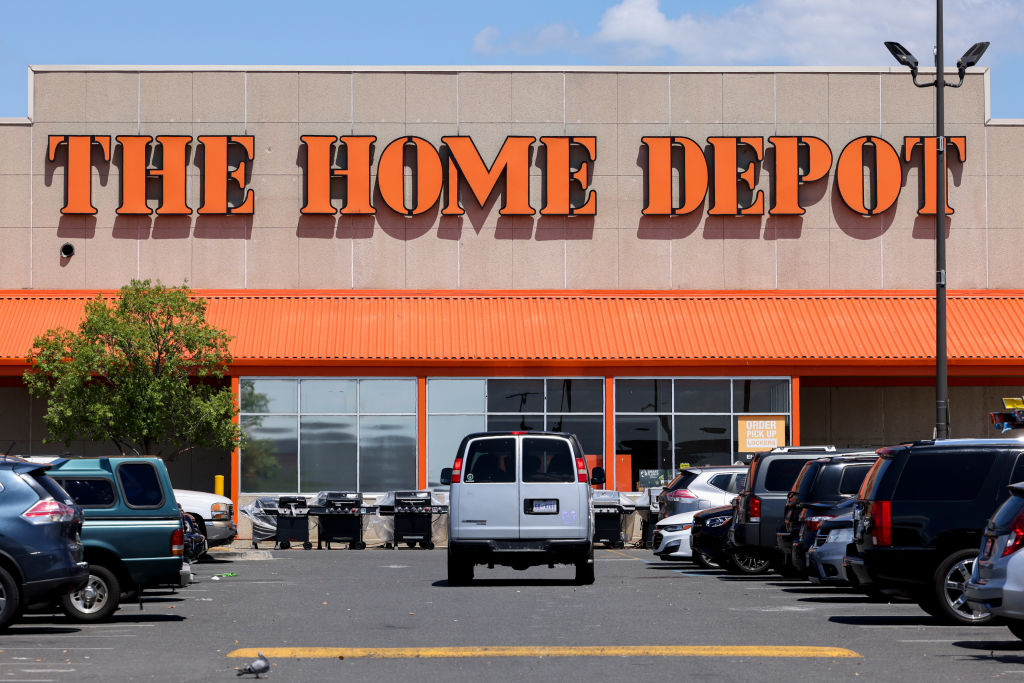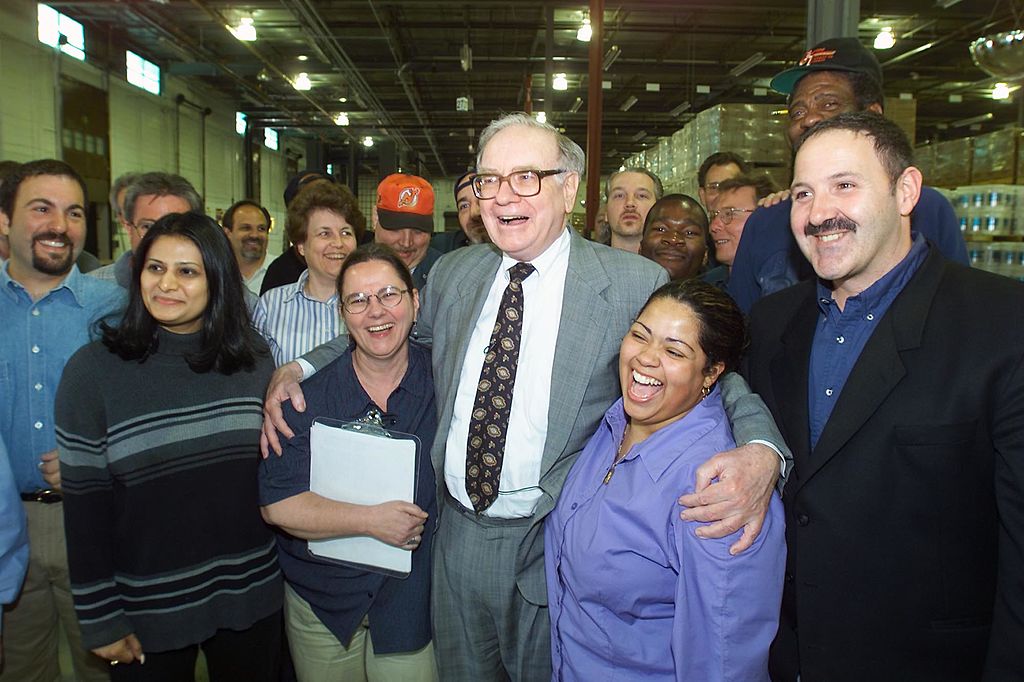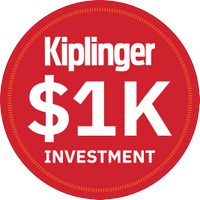Borders: A Story in the Making
The number-two bookseller has some investors excited to read the next chapter.
Booklovers are familiar with the hallmarks of a great read: an interesting protagonist, for one thing, plus forward-moving action and, perhaps, a dash of rivalry and intrigue. The combination of those elements can also make for an interesting investment story. And one analyst who has been watching the plots unfold at the major booksellers says developments at Borders Group have caught his attention.
Borders' story over the past few years hasn't exactly been a page-turner. The company, which owns Borders superstores as well as Waldenbooks, has regularly trailed industry-leader Barnes & Noble in key sales measurements, and "has been slow to reduce exposure to music, close underperforming mall stores and come up with a coherent international strategy," says analyst Gary Balter of Credit Suisse. Earnings have been punk the past couple of years, and the stock (BGP) has mainly gathered dust, falling nearly 9% from early 2004 through the September 7 close.
But the plot is thickening. Borders is trying to become a tougher competitor. To start, it has been revamping its namesake superstores, with a goal of renovating about half the stores by the end of this year. The difference in design hinges not so much on books -- Borders' bread-and-butter -- but on goods that have over the years come to be associated with the bookstore experience. Specifically, the remodeled stores scale back on music offerings (a good thing as demand for CDs has been on the decline) and give more prominence to stationery and gifts. The stores also feature Seattle's Best coffee shops. For the short term, extra spending on store renovations is cutting into the company's profitability. But early reports from the company show that the remodeled stores are performing better than their unremodeled counterparts. Balter expects better sales ahead as more renovations are completed. He notes that Borders expects the investment in refurbishing stores to pay for itself within four years.
From just $107.88 $24.99 for Kiplinger Personal Finance
Become a smarter, better informed investor. Subscribe from just $107.88 $24.99, plus get up to 4 Special Issues

Sign up for Kiplinger’s Free Newsletters
Profit and prosper with the best of expert advice on investing, taxes, retirement, personal finance and more - straight to your e-mail.
Profit and prosper with the best of expert advice - straight to your e-mail.
Balter points to two other important developments that should lead to a new chapter for Borders: The entrance of a strong protagonist -- in the form of new CEO George Jones, who was hired in July -- and a plot twist, in the form of a new customer rewards program. Balter likes that Jones, who previously served as CEO of the Saks Department Store Group, has a keen sense of the challenges Borders faces, and a vision for overcoming them. Balter says Jones is focused on improving merchandising at the stores, which essentially means giving customers a reason to visit the stores and encouraging them to spend their money. He also thinks Jones will come up with smart ways to turn around the struggling Waldenbooks segment and lackluster international sales.
Borders' rewards program, launched last February, should help the Ann Arbor, Mich.-based firm better compete against rival Barnes & Noble, Balter says. Notably, it could play a significant role in Christmas sales this year. Every time a member makes a qualifying purchase, 5% of the price is put away in a type of savings account, which the customer can then redeem during the holiday shopping season, potentially boosting fourth-quarter sales.
Balter now sees Borders as a more exciting stock than Barnes & Noble. It certainly was more exciting on September 8. Shares of Borders rose 7%, to $20.60, after Balter upgraded the stock to "outperform." He downgraded Barnes & Noble (BKS) to "underperform," but the stock barely budged, closing at $35.71.
Borders' story-drivers don't guarantee a happy ending, of course. "This is, as with all turnarounds, a high-risk story," Balter cautions. Still, the intrigue may well be enough to prompt investors to least pick up the book to see what happens next.
Profit and prosper with the best of Kiplinger's advice on investing, taxes, retirement, personal finance and much more. Delivered daily. Enter your email in the box and click Sign Me Up.
-
 Should You Renew Your CD?
Should You Renew Your CD?With rate cuts impacting earnings, we examine if now is a wise time to renew CDs.
-
 7 Ways to Plan Now to Save on Medicare IRMAA Surcharges Later
7 Ways to Plan Now to Save on Medicare IRMAA Surcharges LaterUnderstand the critical two-year lookback period and why aggressive planning before you enroll in Medicare is the most effective way to minimize IRMAA.
-
 Law Reversal Looming? Trump Eyes 2026 Gambling Winnings Tax Change
Law Reversal Looming? Trump Eyes 2026 Gambling Winnings Tax ChangeTax Deductions It's no secret that the IRS is coming after your gambling winnings in 2026. But how long will that last?
-
 If You'd Put $1,000 Into Coca-Cola Stock 20 Years Ago, Here's What You'd Have Today
If You'd Put $1,000 Into Coca-Cola Stock 20 Years Ago, Here's What You'd Have TodayEven with its reliable dividend growth and generous stock buybacks, Coca-Cola has underperformed the broad market in the long term.
-
 If You Put $1,000 into Qualcomm Stock 20 Years Ago, Here's What You Would Have Today
If You Put $1,000 into Qualcomm Stock 20 Years Ago, Here's What You Would Have TodayQualcomm stock has been a big disappointment for truly long-term investors.
-
 If You'd Put $1,000 Into Home Depot Stock 20 Years Ago, Here's What You'd Have Today
If You'd Put $1,000 Into Home Depot Stock 20 Years Ago, Here's What You'd Have TodayHome Depot stock has been a buy-and-hold banger for truly long-term investors.
-
 What the Rich Know About Investing That You Don't
What the Rich Know About Investing That You Don'tPeople like Warren Buffett become people like Warren Buffett by following basic rules and being disciplined. Here's how to accumulate real wealth.
-
 If You'd Put $1,000 Into Bank of America Stock 20 Years Ago, Here's What You'd Have Today
If You'd Put $1,000 Into Bank of America Stock 20 Years Ago, Here's What You'd Have TodayBank of America stock has been a massive buy-and-hold bust.
-

 If You'd Put $1,000 Into Oracle Stock 20 Years Ago, Here's What You'd Have Today
If You'd Put $1,000 Into Oracle Stock 20 Years Ago, Here's What You'd Have TodayORCL Oracle stock has been an outstanding buy-and-hold bet for decades.
-
 How to Invest for Rising Data Integrity Risk
How to Invest for Rising Data Integrity RiskAmid a broad assault on venerable institutions, President Trump has targeted agencies responsible for data critical to markets. How should investors respond?
-
 If You'd Put $1,000 Into Sherwin-Williams Stock 20 Years Ago, Here's What You'd Have Today
If You'd Put $1,000 Into Sherwin-Williams Stock 20 Years Ago, Here's What You'd Have TodaySherwin-Williams stock has clobbered the broader market by a wide margin for a long time.